
Mystery at Olympia is a 1935 detective novel by John Rhode, the pen name of the British writer Cecil Street. It is the twenty second in his long-running series of novels featuring Lancelot Priestley, an armchair detective who was able to solve mysteries without visiting the scene of the crime. It was published in the United States under the alternative title Murder at the Motor Show.
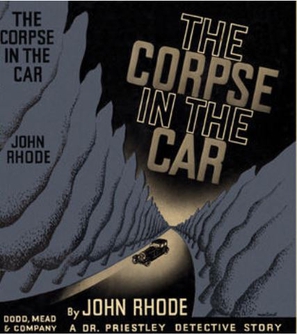
The Corpse in the Car is a 1935 detective novel by John Rhode, the pen name of the British writer Cecil Street. It is the twentieth in his long-running series of novels featuring Lancelot Priestley, a Golden Age armchair detective. A review by Ralph Partridge in the New Statesman commented "Mr. Rhode has written a humdrum, workaday book in The Corpse in the Car. He belongs to the English school of Freeman Wills Crofts, with which it is impossible to find technical fault." In The Spectator Rupert Hart-Davis considered that "The Corpse in the Car is greatly inferior to his last book, Shot at Dawn."
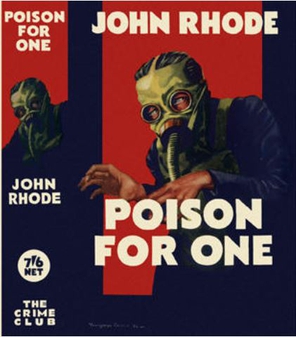
Poison for One is a 1934 detective novel by John Rhode, the pen name of the British writer Cecil Street. It is the eighteenth in his long-running series of novels featuring Lancelot Priestley, a Golden Age armchair detective. It combines elements of the locked room mystery and country house mystery.

Up the Garden Path is a 1949 detective novel by John Rhode, the pen name of the British writer Cecil Street. It is the forty ninth in his long-running series of novels featuring Lancelot Priestley, a Golden Age armchair detective. It was published in America by Dodd Mead under the alternative title The Fatal Garden. Reviewing the novel in The Observer, Maurice Richardson concluded "Mr. Rhode has lost very little of his grip."

The Two Graphs is a 1950 detective novel by John Rhode, the pen name of the British writer Cecil Street. It is the fiftieth in his long-running series of novels featuring Lancelot Priestley, a Golden Age armchair detective. It was published in America by Dodd Mead under the alternative title Double Identities. Writing in The Observer Maurice Richardson noted a "slight slackening of tension towards the finish but an excellent specimen of Rhode’s later period."

Family Affairs is a 1950 detective novel by John Rhode, the pen name of the British writer Cecil Street. It is the fifty first in his long-running series of novels featuring Lancelot Priestley, a Golden Age armchair detective. It was published in America by Dodd Mead under the alternative title The Last Suspect. It has been described as "probably the best post-war Rhode novel".

The Lake House is a 1946 detective novel by John Rhode, the pen name of the British writer Cecil Street. It is the forty second in his long-running series of novels featuring Lancelot Priestley, a Golden Age armchair detective. It was his first novel after returning to his original publisher Geoffrey Bles after all his books between 1931 and 1945 had been published by Collins. His other series featuring Desmond Merrion continued to be released by Collins.

The Claverton Mystery is a 1933 detective novel by John Rhode, the pen name of the British writer Cecil Street. It is the fifteenth in his long-running series of novels featuring Lancelot Priestley, a Golden Age armchair detective. It was published in the United States by Dodd Mead with the altered title The Claverton Affair. The tone of the book has been described as much darker than the author's other novels.
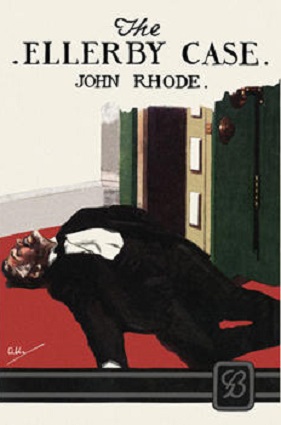
The Ellerby Case is a 1927 detective novel by John Rhode, the pen name of the British writer Cecil Street. It marked the third appearance of the armchair detective Lancelot Priestley, who featured in a long-running series of novels during the Golden Age of Detective Fiction. The novel's success led to a contract with Dodd Mead to release it and subsequent novels in the United States, in what proved to be a lucrative arrangement for the author.
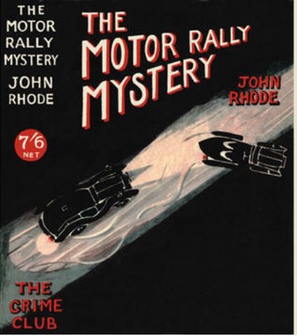
The Motor Rally Mystery is a 1933 detective novel by John Rhode, the pen name of the British writer Cecil Street. It is the fourteenth in his long-running series of novels featuring Lancelot Priestley, a Golden Age armchair detective. It was published in the United States by Dodd Mead under the alternative title Dr. Priestley Lays a Trap. It takes place against the backdrop of the real life RAC Motor Rally, which concluded at Torquay.
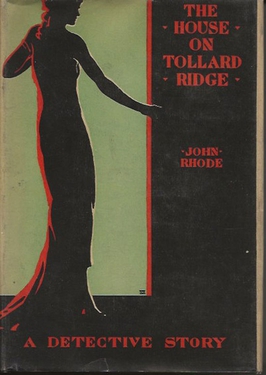
The House on Tollard Ridge is a 1929 detective novel by John Rhode, the pen name of the British writer Cecil Street. It marked the sixth appearance of the armchair detective Lancelot Priestley, who featured in a long-running series of novels during the Golden Age of Detective Fiction. The plot was partly inspired by Rudyard Kipling's short story Wireless, which Rhode mentions in the novel.

The Robthorne Mystery is a 1934 detective novel by John Rhode, the pen name of the British writer Cecil Street. It is the seventeenth in his long-running series of novels featuring Lancelot Priestley, a Golden Age armchair detective. It was published in the United States the same year by Dodd Mead.
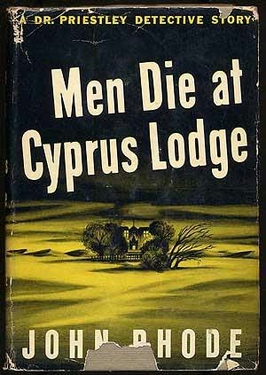
Men Die at Cyprus Lodge is a 1943 detective novel by John Rhode, the pen name of the British writer Cecil Street. It is the thirty eighth in his long-running series of novels featuring Lancelot Priestley, a Golden Age armchair detective. Reviewing it for the San Francisco Chronicle, Anthony Boucher wrote "at his best, nobody can touch Rhode for ingenious murder gadgets and very few can top him for meticulous unravelling; he's very close his best in this one".
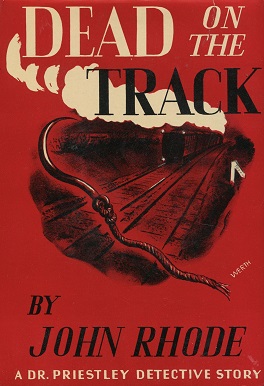
Dead on the Track is a 1943 detective novel by John Rhode, the pen name of the British writer Cecil Street. It is the thirty seventh in his long-running series of novels featuring Lancelot Priestley, a Golden Age armchair detective. Like a number of mystery novels of the era, it has a railway setting. In theme and plot it is very similar to the author's earlier 1931 work Tragedy on the Line. It is the first entry in the series since Hendon's First Case (1935) in which Priestley's old associate Hanslet is the lead investigator. The other recurring police officer in the series Inspector Jimmy Waghorn is now working with military intelligence.

Tragedy on the Line is a 1931 detective novel by John Rhode, the pen name of the British writer Cecil Street. It is the tenth in his long-running series of novels featuring Lancelot Priestley, a Golden Age armchair detective who works alongside the less sharp-witted Superintendent Hanslet of Scotland Yard. It was published in the United States the same year by Dodd Mead.

The Davidson Case is a 1929 detective novel by John Rhode, the pen name of the British writer Cecil Street. It was the seventh appearance of the armchair detective Lancelot Priestley, who featured in a long-running series of novels during the Golden Age of Detective Fiction.

Peril at Cranbury Hall is a 1930 detective novel by John Rhode, the pen name of the British writer Cecil Street. It marked the eight appearances of the armchair detective Lancelot Priestley, who featured in a long-running series of novels during the Golden Age of Detective Fiction. The use of the cipher inspired a similar one used in Dorothy L. Sayers's Have His Carcase
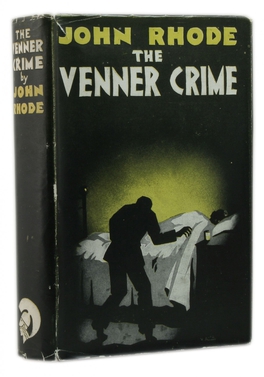
The Venner Crime is a 1933 detective novel by John Rhode, the pen name of the British writer Cecil Street. It is the sixteenth in his long-running series of novels featuring Lancelot Priestley, a Golden Age armchair detective. In Britain it was published by Odhams Press, the only one of his works be done so, while in the United States it was handled by his usual publisher Dodd Mead. It has been described as a sort of sequel to his previous book The Claverton Mystery. Writing in the New York Times Isaac Anderson considered "This is not one of the best of the Dr. Priestley yarns, but it is plenty good enough to pass an idle evening."

Death at the Helm is a 1941 detective novel by John Rhode, the pen name of the British writer Cecil Street. It is the thirty fourth in his long-running series of novels featuring Lancelot Priestley, a Golden Age armchair detective. It makes reference to earlier stories in the series as the lawyer had defended in court the murderers Priestley had exposed in The Corpse in the Car and Death on the Boat Train. The characters in it were arguably more complexly drawn than in other books by the author.

Dead Men at the Folly is a 1932 detective novel by John Rhode, the pen name of the British writer Cecil Street. It is the thirteenth in his long-running series of novels featuring Lancelot Priestley, a Golden Age armchair detective. It was published in the United States by Dodd Mead.




















